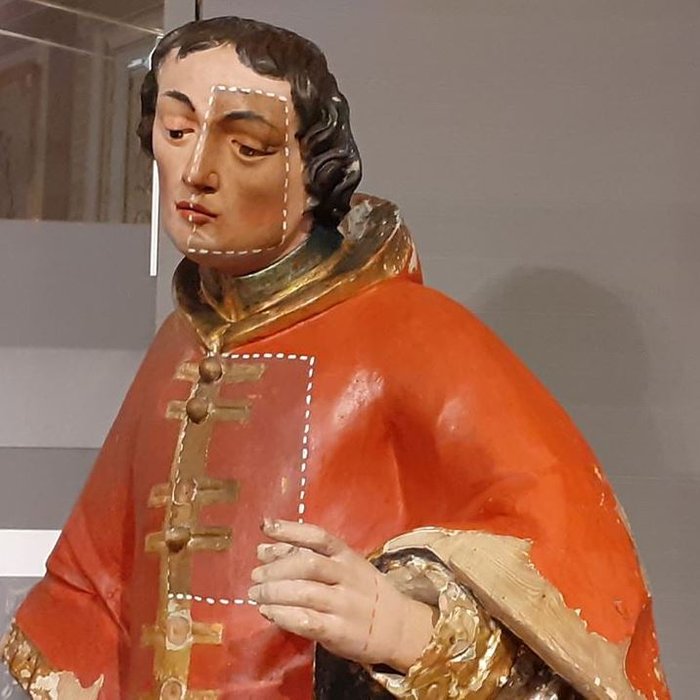Baroque Altars of the German School in Northern Friuli
Research

History of Art and Architecture
Baroque Altars of German School in Northern Friuli
Coordinator: Prof. Giuseppina Perusini
Members: Dr. Martina Visentin, Dr. Claudio Lorenzini
History of Art and Architecture
Baroque Altars of German School in Northern Friuli
Coordinator: Prof. Giuseppina Perusini
Members: Dr. Martina Visentin, Dr. Claudio Lorenzini

In harmony with the interest in the valorisation of the woodcarving heritage which characterises the Friuli Venezia Giulia Region, the research group took part in the national project La scultura lignea in Europa tra Rinascimento e Barocco. Circolazione di maestranze, modelli e materiali tra Italia, Spagna, Francia e Germania (Project PRIN 2013–2016). In general, the project aimed ito reconstruct the movements of artworks and artists from all over Europe towards Italy; as regards the University of Udine team, it focused on the unprecedented and systematic investigation on German and Slovenian wooden sculptures dating back to the Baroque period and spread across the regional mountain territory.
The primary outcome of this work was the volume Sculture lignee tedesche del periodo barocco in Carnia, Canal del Ferro e Valcanale, in G. Perusini (ed.), Sculture lignee tedesche in Carnia, Canal di Ferro e Valcanale dal Tardogotico all'Ottocento (Publisher: Forum Editrice, Udine 2018). Besides the critical text by Giuseppina Perusini, the volume contains the contributions of Claudio Lorenzini and Martina Visentin, dedicated, respectively, to the socio-economic grounds behind the circulation of these artworks and the unfortunate criticism of German and Slovenian woodcarving within the region.
The PRIN project was also an opportunity for the Department to contribute to the implementation of the SICAR – sistema informativo dei cantieri di restauro platform, with the creation of a section dedicated to woodcarving. This aspect was overseen by Martina Visentin.
All these activities led to the rediscovery of an artistic heritage, thus far completely neglected, that can also be promoted in terms of tourism. The investigations have also highlighted the need for restoration works.
At the end of the PRIN project, due to the great number of artworks discovered, the research group decided to delve further into the subject by particularly focusing on the presence of wooden sculptures created by German artists in the Friulian mountain area – whose quality, with regard to the Baroque period, far outweights that of local productions. The investigation went on in the context of the project 1680–1980. Ricchezza e dispersione della scultura lignea nel Canal del Ferro e in Val Canale (CIRF 2018).
On the whole, the study saw the involvement of various Slovenian, Austrian and Croatian scholars, who attended the international conference Scultura lignea barocca di scuola tedesca presente in Friuli, held in Udine on the 7th and 8th November, 2019. Collaboration was also offered by the local Superintendency, the Diocesan Office for Cultural Heritage, and the ERPAC, which could correct and enrich its catalogue with new information. The group also worked with the Museo del palazzo veneziano di Malborghetto and with the ethnographic museums of Udine and Tolmezzo, which hosted three exhibitions dedicated to the theme.
Studies led to the identification of funds for the restoration of some of the artworks investigated. Fondazione Friuli and some other regional associations (such as the Soroptimist club of Udine and the Rotary club of Tarvisio) contributed to the restoration of some sculptures, among which three figures privately donated to the parish of Fusine after their identification in the course of research activities.
Among the publications related to the results of the work, the most prominent are:
- Sculture lignee tedesche del periodo barocco in Carnia, Canal del Ferro e Valcanale, in G. Perusini (ed.), Sculture lignee tedesche in Carnia, Canal di Ferro e Valcanale dal Tardogotico all’Ottocento, Forum Editrice, Udine 2018 (containing the contributions of both Claudio Lorenzini and Martina Visentin).
- G. Perusini, Le sculture della cappella di san Giovanni Nepomuceno nel castello di Stückl (Tarvisio), in Fabio Marcelli (ed.), Festschrift in onore di Francesco Federico Mancini, Aguaplano, Perugia, forthcoming.
- In Intaglio ligneo tedesco e sloveno in Friuli tra XVII e XIX secolo, atti del convegno (7–8 novembre 2019), Università degli studi di Udine (forthcoming): G. Perusini, L’attività della bottega di Johann Pacher in Carinzia e in Valcanale, C. Lorenzini, Il sistema delle devozioni in Val Canale fra XVII e XIX secolo: primi appunti, M. Visentin, Scultura lignea barocca in Friuli: per una storia della critica e del gusto nel XX secolo.




